Teachers
As authorized under the Clean Water Act, the National Pollutant Discharge Elimination System (NPDES) controls water pollution by regulating stormwater that discharges directly into surface waters. To meet the requirements of the NPDES permit, the permittee must meet specific education and outreach requirements outlined in the NPDES permit.
This website provides guidance for the County, Cities, and Townships for achieving the education and outreach requirements of the NPDES permit. It intends to make the education and outreach efforts more effective and meaningful for the municipalities regulated under the permits.
Watersheds
A watershed is the area of land that drains water into a particular river, lake, or even ocean. Everything we do on the land affects “Our Water.” When rain falls to the ground, it travels over the top of land or underground into lakes, rivers, streams, and creeks. Refer also to the What is a Watershed page.
Watersheds fit together like little bowls inside of bigger ones. The Flint River drains into the Saginaw River and the Saginaw River drains into the Saginaw Bay. Therefore, the Flint River is part of the Saginaw Bay Watershed. Saginaw Bay is part of Lake Huron. Lake Huron drains to Lake Erie, then to Lake Ontario, then through the St. Lawrence River, and finally all the way to the Atlantic Ocean. Additional resources and information on watersheds are listed below.
Maps and Posters
In What Sub-Watershed Is Your School Located?
- Countywide Watershed map
- Lower Flint River Watershed map
- Middle Flint River Watershed map
- Upper Flint River Watershed map
- Shiawassee River Watershed map
Flint River GREEN
Flint River GREEN is a program where students from local schools learn about water quality and testing. The Flint River Watershed Coalition (FRWC) is the organization that manages this program. Contact FRWC if you are interested in participating.
EnviroScape®
The EnviroScape® series of portable models dramatically demonstrate water pollution concepts and their prevention. EnviroScape® effectively communicates our shared responsibility for the environment to people of all ages, languages, and cultures. Our models and kits create a real sense of understanding through experience and hands-on demonstration.
“Our Water” Lesson Plans
Aqua Bodies ( Grades K-1 )
Students consider how long humans can live without water. Students compare the weights of dried and fresh food. Students trace their bodies and color portions to represent the amount of water their bodies contain.
Thirstin’ Builds an Aquifer in a Cup ( Grades K-3 )
This class activity will have the students make an “Aquifer in a Cup” or “Aquifer on the Go”. The students will learn how water is stored in an aquifer, how groundwater can become contaminated, and how this contamination ends up in a drinking water source.
Global Water ( Grades 3-5 )
Not all drinking water comes from the same source. In this lesson, students will collect data on their household water use and calculate how many gallons of water a person uses per day.
Research your Watershed ( Grades 7-10 )
Students will take on research projects to learn more about their watershed and surrounding community.
School Yard Rain Garden ( Grades 7-12 )
Students will work with the school administration and maintenance staff to design and implement a school-yard rain garden. The rain garden can eventually serve as an outdoor learning lab for younger students.
Hazardous Waste Disposal ( Grade 9 )
While studying the effects of industrialization on the environment, students will launch a campaign to get other students to safely dispose of household hazardous products from their homes.
Stormwater Savvy ( Grades 9-12 )
Students will create a campus stormwater policy to guide students, faculty, and the administration in adopting stormwater-friendly behaviors while exploring chemistry and environmental concepts.
More Lesson Plans
Topics on Watersheds, Nonpoint Source Pollution, Stormwater, the Water Cycle, etc.
- Environmental Protection Agency (EPA): The pdf version of The Water Sourcebook which includes lesson plans (K-12) on general water topics.
- Lower Grand Watershed Interactive Tool (WIT): Created by the Annis Water Resources Institute, part of Grand Valley State University in Allendale, Michigan. Free lesson plans are a great resource for teachers.
- EGLE– Michigan Environmental Education Curriculum Support (MEECS): Curriculum units designed for the MEECS include units on air quality, ecosystems, energy resources, and individuals’ impacts on the land and water quality. Units are targeted to science and social studies for middle school students (Grades 4-9).
- Michigan Tech, Forest Resources, and Environmental Sciences: Teaching units for grades 5-12 are set to state benchmarks dealing with forest ecology.
- North American Association for Environmental Education (NAAEE): Provides numerous links to places offering free lesson plans related to environmental education.
- Project FLOW – Fisheries Learning On the Web: Offers a comprehensive curriculum about the Great Lakes ecosystem. Lessons are geared to upper elementary and middle school students and align with state and national curriculum standards. Lesson plans focus on the Food Web, Water, and Fish.
- Project Webfoot: A Ducks Unlimited wetlands education program offers a teacher’s kit of learning materials intended to “help bring the world of wetlands to life” for 4th-6th graders. Curriculum materials are created with an interdisciplinary approach to learning and can be used for a variety of subjects including science, reading, art, and social studies.
- Project Wet: The website has a link to the Project Wet store with numerous educational materials for sale including teacher’s guides, student workbooks, and water testing kits. This project is in partnership with the “Healthy Water, Healthy People” and “Tribal Waters“, a program geared toward the Native American approach to water cycles.
Educational Water Resources
- Cranbrook Institute of Science – Distance Learning: Using the latest, High Definition of videoconferencing technology with chroma-key effects, Cranbrook Institute of Science brings quality science programs direct to your classroom! Study your school’s watershed using maps and other scientific tools. Students will gain an appreciation for nature and our most precious resource, water, through this investigative program.
- Environmental Law – The History of the Clean Water Act: Does not contain lesson plans but can be used to better understand the purpose, enforcement, and challenges of implementation of the Clean Water Act.
- Environmental Protection Agency (EPA) – How’s My Waterway: Designed to provide the general public with information about the condition of their local waters based on data that states, federal, tribal, local agencies, and others have provided to EPA. Water quality information is displayed on 3 scales in How’s My Waterway; community, state, and national. More recent or more detailed water information may exist that is not yet available through EPA databases or other sources.
- Environmental Protection Agency’s (EPA) – “Watershed Academy Web”: Extensive modules on watersheds and their management.
- Literature and Films: A list of suggested literature and films about water for various ages.
- MSU Extension – Water Quality Materials: Online tip sheet style publications dealing with septic tanks, maintenance dealing with exotic species, home water treatment, water conservation in home and yard, etc.
- Ohio Watershed Network – Virtual Fieldtrip: Leave your canoe in the garage and float down a virtual stream while you learn about watersheds, their components, their importance, and what you can do to protect them. While this tour is set in Ohio, it provides a good overview of watersheds if you can’t take your students on a boat.
- Oral Presentation and Writing Prompts: A list of potential student presentation/project topics and writing prompts suggestions.
- Science Fair/Project Ideas: A list of potential student science project ideas.
- S. Environmental Protection Agency – What You Can Do: In Your Classroom: Teachers and students can work to reduce and prevent nutrient pollution in their communities. Check out these resources for use in the classroom.
- United States Geologic Survey – USGS and Science Education: Selected online resources, including lessons, data, maps, and more to support teaching, learning, education (K-12), and college inquiry and research.
- United States Geologic Survey – USGS Water Science for Schools: Does not contain lesson plans but has many useful educational materials about water including access to maps, data, pictures, and quizzes to test your water knowledge.

